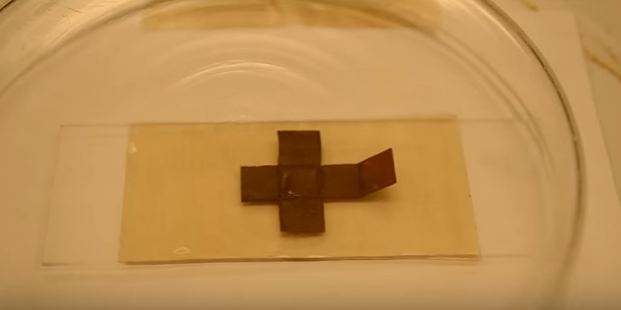Smart material changes shape with heat or light
Engineers from Washington State University have developed a new multi-functional smart material that can change shape from heat or light and assemble and disassemble itself.
This is the first time that researchers have been able to combine multiple smart abilities, such as shape memory behavior, light-activated movement and self-healing behavior, into one material.

Smart materials are ones that can react to external stimuli, in this case light or heat, and sometimes look like they can fold and unfold themselves. Researchers have been spending a lot of time working with smart materials because of their numerous potential applications in actuators, drug delivery systems and self-assembling devices. For example, smart materials could change their shape to unfold a solar panel on a space satellite without the need for a battery-powered mechanical device.
The reason smart materials are not being used in everyday technology yet is because they are difficult to make and can often only perform one function at a time.
What the WSU team came up with was a material that allows for multiple functions at once with the potential to add more, and has now filed a provisional patent on the work.
To create the material, the team manipulated long-chain molecules called liquid crystalline networks (LCNs), which provide order in one direction and give material unique properties. The researchers leveraged the way the material changes in response to heat in order to give it its shape-shifting abilities. They added groups of atoms that react to polarized light and used dynamic chemical bonds to heighten the material’s abilities.
“We knew these different technologies worked independently and tried to combine them in a way that would be compatible,” said Michael Kessler, professor and Berry Family director and in the WSU School of Mechanical and Materials Engineering (MME).
What they were left with was a material that can remember its shape as it folds and unfolds and can also heal itself when damaged. So, let’s say there’s a razor blade scratch in the material, this can be fixed by applying ultraviolet light. The material’s movements can be pre-programmed and its properties can be tailored to fit certain scenarios.

Comments are closed, but trackbacks and pingbacks are open.